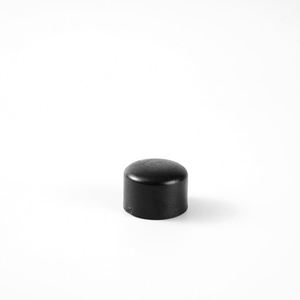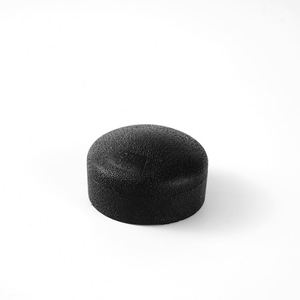
All categories
Featured selections
Trade Assurance
Buyer Central
Help Center
Get the app
Become a supplier

(950 products available)














































There are different types of stub-end fittings, each with unique characteristics and applications. These include:
Butt-fusion stub end fitting:
The butt fusion stub end fittings are made of the same material as the pipe they are welded to. They come in different sizes, SDRs, and diameters. They are available in PE80 and PE100 materials. The fittings have a long pipe section (called a socket) welded to the main pipeline. The other end of the fitting is a smooth, short pipe (called a lap) that is flanged. The lap makes it easier to connect other pipes, valves, or fittings using a flange joint.
Molded and electrofusion stub ends:
These fittings are made from PE100 material. They are available in different sizes, SDRs, and diameters. The electro-fusion stub end fittings have no socket or lap. Instead, they have an electrofusion joint that contains special coils. The joint is prepared by cleaning it and putting an electrofusion unit over it. Then, the electrofusion process is carried out to complete the joint. The joint is then able to withstand pressure and axial loads.
Slip-on and welded steel stub ends:
These fittings are made from carbon steel. They are available in different sizes, slip-on and welded steel stub ends, and dimensions. They are popular in heavy-duty applications. The slip-on end is inserted into the other pipe or fitting, while welding is used to secure the connection. The flange on the stub end provides a strong, easy-to-make joint.
Seamless carbon steel stub ends:
These fittings are made from carbon steel. They are available in different sizes, SDRs, and diameters. They have no seams, making them ideal for high-pressure applications. The seamless design provides strength and reliability. Like the welded steel stub end, the flange provides a strong joint.
A stub end is a fitting that is welded to a pipe for the purpose of connecting another pipe or fitting. It is used with a flange that has a matching socket so that the second pipe or fitting can be connected. The HDPE stub end is a type of fitting used in the piping industry to connect pipes or flanges of different sizes or materials. It has several features and functions, including:
Connection:
The main function of an HDPE stub end is to provide a socket welding connection for the pipe or flange. Socket welding is a process where the pipe or flange is inserted into the stub end socket and welded on the outside. This connection can easily be made and is strong and leak-proof.
Reducing size:The HDPE stub end comes in different types, such as reducing and non-reducing stub ends. The reducing stub end can decrease the diameter of the pipe or flange connection. This is useful when connecting pipes or flanges of different sizes. The non-reducing stub end helps maintain the same diameter throughout the pipeline system.
Material transition:
HDPE stub ends are primarily made from high-density polyethylene (HDPE) material. However, they can be used to connect pipes or flanges made from different materials, such as steel or PVC. This allows for flexibility in pipeline design and installation.
Compatibility:
These stub ends are designed to be used with specific pipe or flange diameters and pressure ratings. This ensures that they can handle the flow of liquids or gases without leaking or breaking. It is important to choose the right stub end for the application to prevent pipeline failure.
Installation:
Stub ends are easy to install. They can be welded to the pipe or flange in a socket joint configuration. This joint configuration is simple and quick, making stub ends a popular choice in pipeline installation.
Maintenance:
These fittings are durable and resistant to corrosion. This makes them able to withstand different environmental conditions without being damaged. They can also be repaired or replaced if they become worn out or damaged. This reduces maintenance costs and keeps the pipeline system running smoothly.
HDPE pipe systems have several applications across various industries due to their durability, flexibility, and resistance to corrosion. Here are some common usage scenarios:
Municipal Water Supply
Municipal water systems often use HDPE pipes to transport potable water because of their smooth interior, which reduces friction and improves flow. Their resistance to chemicals and ability to withstand high pressure make them ideal for this application.
Sewer and Wastewater Management
These pipes are used for sewer lines and stormwater drainage systems due to their strong, durable nature. They can survive years of continuous use without leaking or breaking. Moreover, their smooth interior makes them perfect for efficient wastewater flow.
Gas Distribution
HDPE pipes are used to distribute natural gas and propane. Their low permeability prevents gas from escaping, and their capacity to resist environmental stressors makes them suitable for underground applications.
Oil and Slurry Transport
These pipes are also used to transport crude oil and other liquids because of their strength and resistance to impact. They are also used to transport coal and other slurries in the mining industry.
Mining
In the mining industry, HDPE pipes are used for dewatering, transferring water to and from mining sites, and transporting minerals. Their strength and resistance to abrasion make them perfect for this use.
Drainage Systems
Perforated HDPE pipes are used in agricultural and landscaping applications for drain water and rainwater harvesting. Their resistance to corrosion and flexibility makes them suitable for subsurface drainage systems.
Industrial Applications
Numerous industries, such as chemical plants, paper mills, and power plants, use HDPE pipes to transfer liquids, slurries, and gases. Their capacity to resist industrial chemicals and high-pressure environments makes them suitable for these applications.
Electrical and Communication Ducts
HDPE conduits are used to protect and transport electrical cables and communication lines because of their smooth surface, which enables easy cable pulling, and their resistance to UV radiation and chemicals.
Marine Applications
Some HDPE pipes are specifically designed for marine applications, such as underwater cable protection and marine outfall. Their buoyancy and resistance to seawater make them suitable for these uses.
Geothermal Systems
HDPE pipes are used in geothermal heating and cooling systems due to their thermal efficiency and ability to resist buried applications. Their use in these systems can help improve energy efficiency and reduce utility costs.
Pressure Rating:
The first thing to consider is the pressure rating of the pipeline where the stub end will be used. Each HDPE stub end has a specific pressure rating. It's very important to select a stub end whose pressure rating matches or exceeds the pipeline pressure. This ensures safe connections that can withstand the operating pressure without failure.
Compatibility of Materials:
Another key factor is the compatibility of the materials being transported through the pipe. HDPE is used for many applications due to its resistance to chemicals and strength. Consult the relevant material compatibility charts to ensure that HDPE is suitable for the specific application. This is very important for preventing leaks and ensuring the safety of the entire piping system.
Pipe Diameter:
The diameter of the pipes being connected directly affects the choice of a stub end fitting. Stub ends come in different sizes to accommodate different pipe diameters. Accurately measure the pipe diameter to select a stub end that fits securely. A loose or tight fit can cause weak connections leading to leaks or other serious issues.
Wall Thickness:
The wall thickness of the pipes being connected also affects the choice of stub ends. Stub ends designs like the long welding stub end and short welding stub end accommodate different wall thicknesses. Ensure that the selected stub end matches the pipe wall thickness for optimal flow and reduced turbulence.
Joint Type:
Joint types like electrofusion and butt welding determine how pipes are connected to fittings. It's important to select stub ends compatible with the joint type used in the piping system. This ensures strong connections and simplifies installation processes.
End Type:
HDPE stub ends come with various ends like plain ends and raised faces. It's important to select an end type compatible with the pipe end type to ensure a leak-proof connection.
Environmental Factors:
Consider the environmental factors surrounding the piping system. These factors include temperature, UV radiation, and exposure to chemicals. If the piping system is installed in an area with high UV radiation, consider using UV-resistant materials for optimal performance. This prevents premature damage to the piping system.
Q1: What does SDR stand for? And what does it have to do with an HDPE pipe's pressure rating?
A1: SDR means Standard Dimension Ratio. It is a method of classifying pipes based on their thickness. The ratio is the pipe's diameter divided by its thickness. The higher the SDR number, the thinner the pipe wall for a given diameter. Pipes with thinner walls have lower pressure ratings because the wall thickness affects the pipe's ability to withstand internal pressure. HDPE pipe fittings with thicker walls have higher pressure ratings.
Q2: What are the benefits of an HDPE stub end?
A2: An HDPE stub end is a fitting welded to the pipe, allowing a flange fitting to be bolted when a slip-on flange is welded to the stub end's flange-like portion. The stub end fitting is ideal for HDPE pipes because it is lighter than comparable steel fittings. They can be used instead of a steel fitting and are more resistant to corrosion, making them a better option in many instances.
Q3: What does PE stand for in HDPE, and what does it mean?
A3: PE means polyethylene. It is a thermoplastic polymer used to make many plastic products. It is popular because it is lightweight, resistant to impact, and has the ability to resist moisture. There are different types of polyethylene, including high-density polyethylene and medium-density and low-density polyethylene.
Q4: What are the applications of polyethylene pipes?
A4: Polyethylene pipes are widely used in various industries and applications because of their lightweight, flexibility, and resistance to impact and corrosion. Common applications include water supply and irrigation, gas distribution, sewer and drainage systems, electrical and communications ducting, mining and industrial applications, agricultural applications, and geothermal systems.